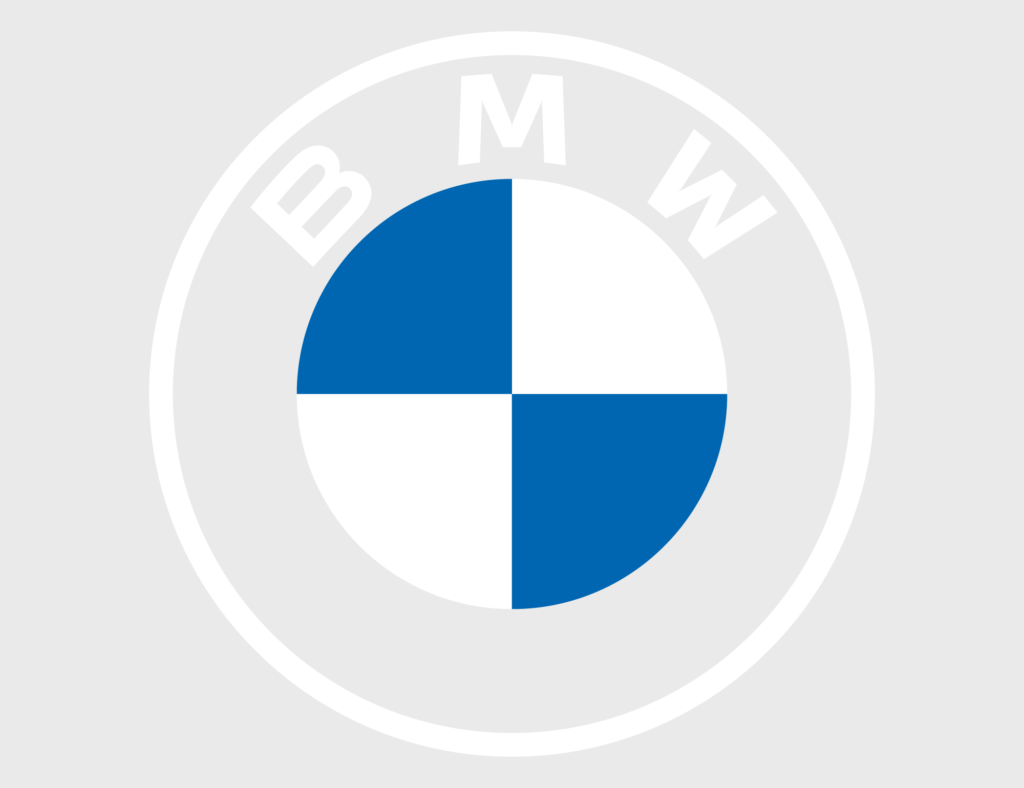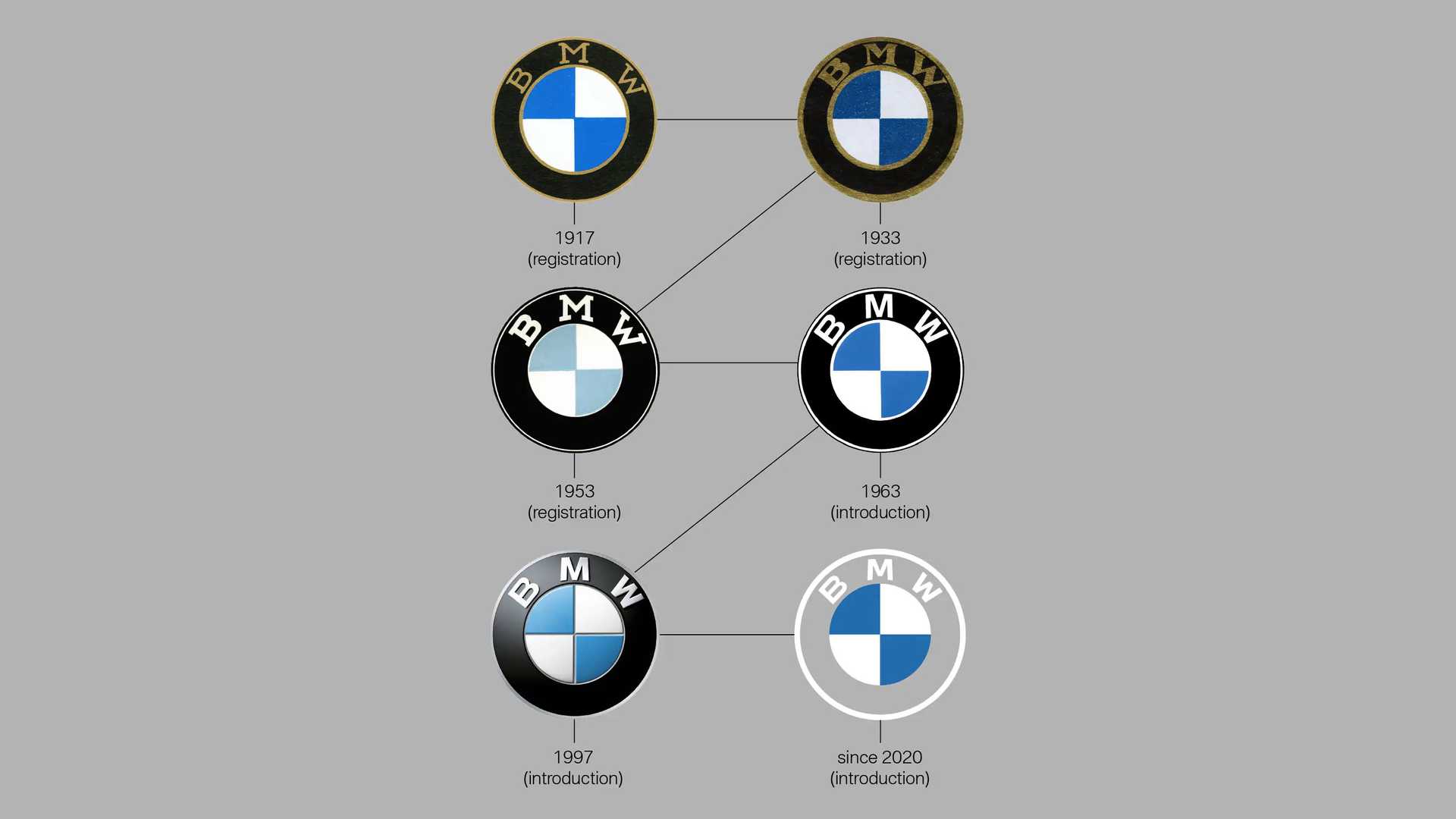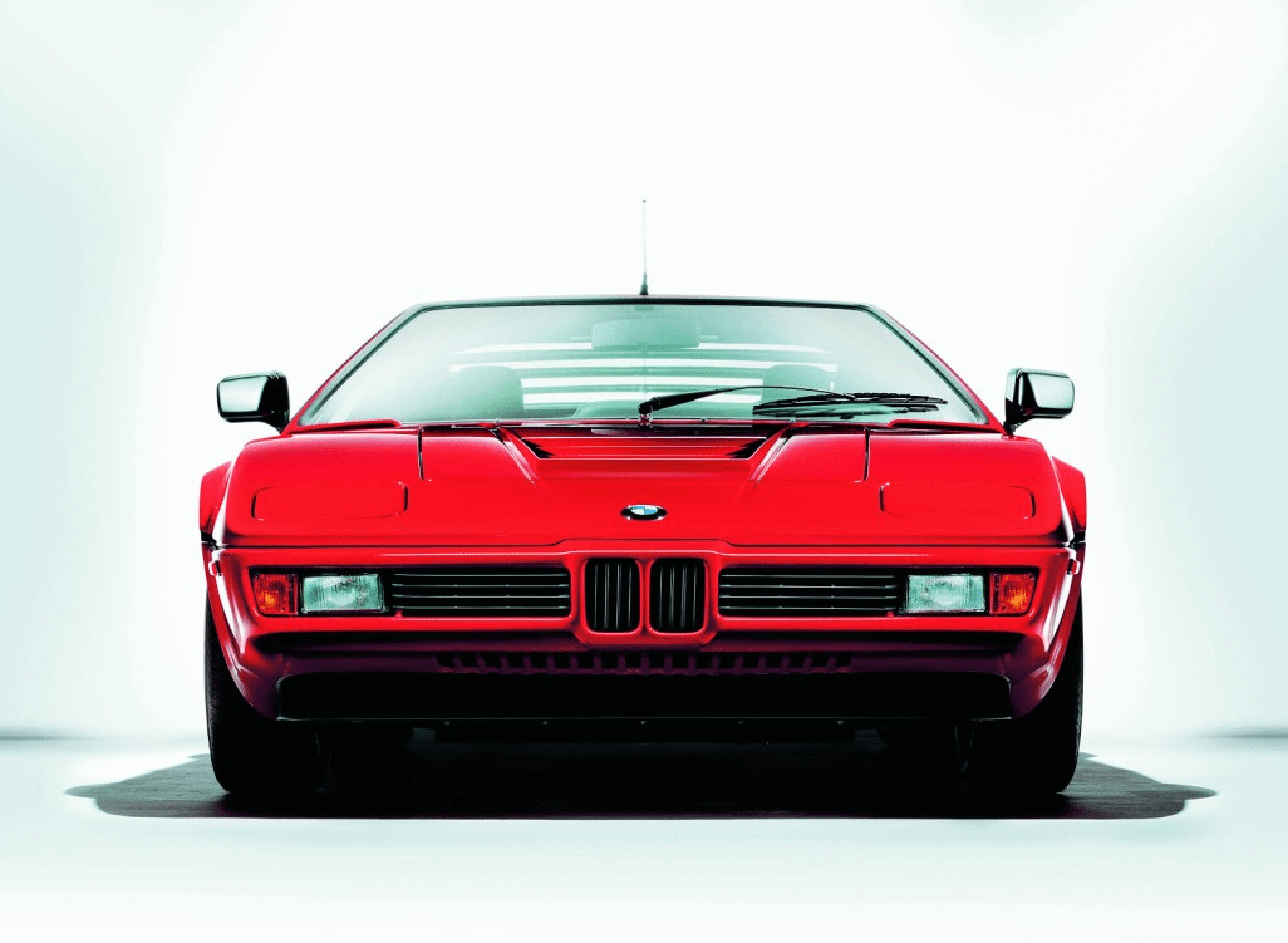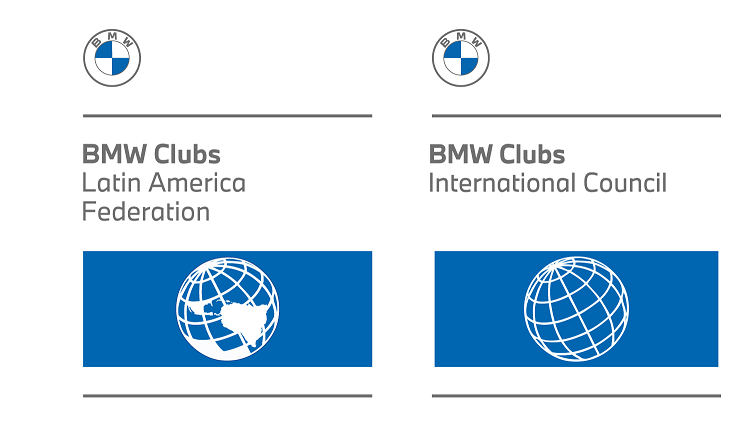
Chronological history of the BMW brand
More than 100 years
BMW Name: The BMW Name and it History (PDF 2.1 MB)
March 7, 1916
Bayerische Flugzeugwerke AG is established as the successor to the aircraft manufacturer Gustav-Otto-Flugmaschinenfabrik with its registered office at Lerchenauer Straße in Munich. In 1922, the construction of the engine, the Bayerische Motoren Werke AG brand name and logo were transferred to this company. Therefore, it is considered as the date of establishment of the "New BMW AG".
July 21, 1917
The aerodynamic engine manufacturer Rapp-Motorenwerke GmbH, founded in 1913, is entered in the Commercial Register under the name Bayerische Motoren Werke GmbH, and soon after, new manufacturing facilities are established at Moosacher Straße in Munich.
December 10, 1917
The round logo of the brand with the BMW letters and the stylized propeller designed in the Bavarian national colors of blue and white is entered under the number 221388 in the Trademark Register of the Imperial Patent Office. In the late 1920s, this livery first appeared in advertising as a stylized spinning propeller, which has since formed the basis for the logo's interpretation.
17 de junho de 1919
Test pilot Zeno Diemer reaches an altitude of 9,760 meters in his aircraft manufactured by Deutsche Flugzeugwerke and powered by the BMW IV six-cylinder in-line engine, setting a new world altitude record.
July 6, 1922
Bayerische Flugzeugwerke AG acquires the company name Bayerische Motoren Werke, the brand logo and engine construction from the current owner, Knorr-Bremse AG.
September 28, 1923
At the German Motor Show in Berlin, the BMW R 32 is presented - the first motorcycle produced under the brand, developed under the direction of Max Friz, powered by a horizontally opposed two-cylinder four-stroke Boxer engine.
February 2, 1924
Engineer and racing driver Rudolf Schleicher achieves the best time driving a BMW R 32 down the hill at steep Mittenwalder Gsteig, giving BMW the first victory in motorsport history.
October 1, 1928
BMW takes over the carmaker Fahrzeugfabrik Eisenach in Thuringia, where the Dixi 3/15 PS small car is manufactured as a licensed version of the British Austin Seven. This makes the company an automobile manufacturer.
March 22, 1929
The first BMW 3/15 PS rolls off the assembly line in the rented production building of the car manufacturer Ambi-Budd at the former Berlin-Johannisthal airfield.
June 22, 1931
The "Rail Zeppelin" powered by the aerodynamic BMW VI twelve-cylinder engine built by railway designer Franz Kruckenberg reaches a speed of 230 km / h and thus reaches a new world speed record for rail vehicles.
March 1, 1932
BMW finalizes the licensing agreement with Austin and shortly thereafter unveils the company's first in-house car design - the BMW 3/20 PS with a new four-cylinder engine and a two-door steel body.
July 22, 1932
Pilot Wolfgang von Gronau takes off in the Dornier "Wal" (whale) flying boat, powered by two 600 hp twelve-cylinder engines of the BMW VIIa type, to complete the world's first circumnavigation covering a total distance of 44,800 kilometers.
February 11, 1933
The BMW 303 is presented at the Berlin International Motor Show as the brand's first six-cylinder car and also the first model designed with the signature BMW kidney-shaped radiator grille.
December 21, 1934
The construction of aerodynamic engines will be transferred to a dedicated company with retroactive effect to January 1, 1934 and will become BMW Flugmotorenbau GmbH.
February 15, 1936
The BMW 326 is presented at the Berlin International Motor Show as the new mid-range model powered by an in-line six-cylinder engine, designed with a box-section frame, an aerodynamically contoured body and a brake system. hydraulic.
June 14, 1936
The two-liter BMW 328 sports car is presented to the public for the first time at the Eifel Race at the Nürburgring: Ernst Jakob Henne immediately achieves a clear victory from start to finish while driving the new model.
November 28, 1937
BMW driver Ernst Henne starts on the last of many world record trips and reaches a record speed of 279,503 km / on a fully faired BMW motorcycle with a supercharger, a record that was only broken 14 years later.
June 8, 1939
Georg "Schorsch" Meier is the first non-British to win the Senior-TT on the Isle of Man on a supercharged BMW motorcycle.
September 30, 1939
BMW AG acquires all the shares of Brandenburgische Motoren Werke GmbH in Berlin-Spandau. BMW had already been cooperating with the company in the development of air-cooled aircraft engines.
April 28, 1940
Fritz Huschke von Hanstein and Walter Bäumer achieve overall victory in the Mille Miglia endurance race in Italy driving the BMW 328 Touring Coupé, and they also win the team placing in all classes for BMW.
April 30, 1945
Soldiers of the US 7th Army arrive at the so-called shadow plant and the camp in Allach, near Munich. Since December 1939, prisoners of war, convicts, forced laborers, and concentration camp prisoners have been used there and elsewhere.
December 17, 1948
Motorcycle production restarts in Munich. A BMW R 24 powered by a single-cylinder engine is manufactured there as the first BMW AG vehicle in the post-war era.
March 11, 1954
The BMW 502 presented at the Geneva Motor Show is powered by an eight-cylinder engine, the world's first full-alloy V8 engine to be fitted in a large-volume car.
September 12, 1954
Following their final race victory at Monza, Wilhelm Noll and Fritz Cron clinch their first World Championship title in a sidecar combination in a BMW. For 1974
BMW had managed to collect 19 titles of world champions of pilots and 20 of constructors in this discipline.
October 1, 1954
BMW acquires the license to build a two-seater microcar with a front door from the Italian manufacturer Iso. The BMW Isetta has many refined details, is powered by BMW motorcycle engines and is marketed as a "Motocoupé", the best-selling model sold by the brand during the 1950s.
January 15, 1955
A new model series is presented at the Brussels Motor Show with the BMW R 50 and BMW R 69 manufactured with a full swing arm suspension. The series defined the BMW motorcycle program until 1969.
September 22, 1955
The BMW 507 made its first public appearance at the Frankfurt International Motor Show. This roadster had been written by designer Albrecht Graf Goertz with a 150 hp eight cylinder engine and is celebrated in the press as the "Isar Dream".
June 9, 1959
The Board of Management of BMW AG presents the new BMW 700 Coupé to international journalists at a press release. This car would lay the foundation for profitable large-scale automobile production.
December 9, 1959
At the Annual General Meeting of BMW AG, a group of small shareholders prevents the acquisition by Daimler-Benz AG. The main shareholder Herbert Quandt decides to make a bigger commitment to ensure the independence of BMW.
November 30, 1960
The Annual General Meeting of BMW AG approves the restructuring plan for the realignment of the company and this sets the course for a successful future.
September 21, 1961
The BMW 1500 celebrates its world premiere at the International Motor Show in Frankfurt, the beginning of the pioneering success of the "New Class".
June 29, 1964
Positive business development encourages the BMW AG Annual General Meeting to pass a resolution on the payment of dividends to shareholders for the first time since the end of the war.
June 18, 1965
BMW AG sells its remaining shares in BMW Triebwerkbau GmbH to MAN AG and for the moment ends its participation in the production of aircraft engines.
March 7, 1966
The two-door BMW 1600 is presented to guests in front of the Bavarian State Opera on the occasion of the company's 50th anniversary celebration.
January 2, 1967
BMW AG takes over Hans Glas GmbH, which produces various vehicles, including the Goggomobil microcar, many other models and agricultural machinery.
September 25, 1968
The new six-cylinder models BMW 2500 and BMW 2800 are presented at a press reception at Lake Tegernsee. After a break of several years, the brand re-enters the luxury class with these cars.
December 31, 1968
BMW AG concludes another record year. More than 100,000 cars are produced for the first time in a year.
May 13, 1969
Motorcycle production at BMW's main plant in Munich comes to an end. Production is moved to the site in Berlin, where the new BMW / 5 Series begins to roll off the production line from September 1969.
March 16, 1971
The company enters the financial services business with the establishment of BMW Kredit GmbH.
October 20, 1971
BMW's new test and test facility opens in Aschheim, near Munich.
May 24, 1972
BMW Motorsport GmbH is established. He is responsible for all sports activities and the development of race cars and particularly sports cars licensed for use on roads.
August 31, 1972
BMW AG founds BMW (South Africa) (Pty) Ltd and has a majority stake in this sales and production company. This makes the Rosslyn plant in South Africa the first production facility outside of Germany.
September 10, 1972
At the Munich Olympics, a BMW 1602 Elektro is used as a support vehicle for the marathon race. This is the first pure electric car under the BMW brand.
September 12, 1972
BMW launches a new structure for model designations with the first BMW 5 Series as the successor to the "New Class". This gives BMW clearly defined model designations that are easy to remember, and the underlying principle of the system continues to this day. The first digit represents the series and the next two digits specify the model based on engine capacity.
January 8, 1973
When the BMW subsidiary is established in France, the company begins to take control of sales activities in international markets.
May 18, 1973
The new administrative building and the BMW Museum are officially opened. The construction of the structural framework of the "Four Cylinders" and the "Museum Bowl" was completed in time for the Olympic Games last year.
September 27, 1973
Production begins at the vastly expanded and modernized Dingolfing Plant. Initially, BMW 5 Series models are manufactured there.
June 14, 1975
A BMW 3.0 CSL designed by American artist Alexander Calder is the first BMW Art Car to start at the 24 Hours of Le Mans.
This is the beginning of a fascinating and unique art collection that BMW continues to grow today.
June 30, 1975
At the Olympic Stadium in Munich, the Board of Management of BMW AG presents the BMW 3 Series, which is launched as the successor to the successful BMW 02 Series with new technology and new model designations.
February 3, 1976
BMW Motorsport GmbH is tasked with establishing a "driving school" which has been established as the BMW Driving Experience and the MINI Driving Experience, offering a training and experience program for more joy and safety at the wheel. The first official courses begin on April 22, 1977.
March 11, 1976
The coupes of the new BMW 6 Series are presented at the Geneva International Motor Show.
October 5, 1978
The BMW M1 is presented at the Mondial de l’Automobile in Paris. This is a 277 hp mid-engined sports car developed by BMW Motorsport GmbH. Its racing version creates a sensation in racing, including the Procar series in the support program for Formula 1 in Europe in 1979 and 1980.
June 21, 1979
Groundbreaking ceremony for the engine plant in Steyr, Austria, which today serves as a competence center for the development and production of a variety of engines, including BMW diesel power units.
January 20, 1981
French racing driver Hubert Auriol wins the Paris-Dakar Rally riding a BMW R 80 G / S and provides further proof of the reliability of the Enduro model launched the previous year, powered by a Boxer flat boxer engine.
June 13, 1983
BMW presents the first car series in the company's history powered by a diesel engine, the BMW 524td with an in-line six-cylinder turbo diesel engine generating 85 kW / 115 hp.
October 15, 1983
At the South African Grand Prix, Brazilian racing driver Nelson Piquet becomes the Formula 1 World Champion driving the Brabham BMW, just 630 days after BMW's premiere at the blue-riband event, and is also the first champion in a turbocharged vehicle. engine.
January 1, 1985
BMW Technik GmbH establishes itself as an autonomous think tank and incubator for innovation, developing visionary concepts for vehicles and parts.
September 12, 1985
BMW presents the first all-wheel drive model at the International Motor Show, the BMW 325i with all-wheel drive and the extremely sporty BMW M3.
March 5, 1987
The BMW 750i is unveiled at the Geneva Motor Show, the first twelve-cylinder model to roll off a German production line since the end of the war.
May 22, 1987
The new BMW Plant Regensburg is officially inaugurated. The first model to be produced there since late 1986 is the BMW 3 Series saloon.
September 11, 1987
The BMW Z1 roadster developed by BMW Technik GmbH is presented at the International Motor Show in Frankfurt.
November 15, 1987
Italian racing driver Roberto Ravaglia becomes the first world touring car champion to drive a BMW M3 with the Schnitzer Motorsport team.
April 27, 1990
The Center for Research and Engineering (FIZ, today known as the Center for Research and Innovation) was officially opened with a gala ceremony in the Milbertshofen district of Munich. Around 7,000 researchers, engineers, designers, managers and technicians work there in a tight-knit network.
July 1, 1990
BMW AG joins forces with its partner Rolls-Royce Plc to establish the independent company Rolls-Royce GmbH for the development, construction and sale of aircraft turbines, and this joint venture takes the company back to its roots. Following the realignment of the company, BMW AG sold its shares in Rolls-Royce plc at the end of 1999.
March 10, 1992
The new plant of BMW Fahrzeugtechnik GmbH opens on the traditional heritage site in Eisenach. The pressing tools are manufactured there for the company's production network.
August 1, 1993
BMW Motorsport GmbH, established in 1972, changes its name to BMW M GmbH Gesellschaft für individuelle Automobile (BMW M GmbH: for individualists).
January 29, 1994
With the signing of the purchase contract, BMW AG takes over the British Rover group, which includes the Rover, MG, MINI and Land Rover brands.
April 8, 1994
The BMW Group Mobile Tradition was established, and since 2008 is responsible for all requirements related to the company and product history September 8, 1994
Vehicle production begins at the BMW Spartanburg plant in the US state of South Carolina: a BMW 318i is the first model to roll off the production line. The official opening of the new location takes place on November 15.
June 8, 1998
The company announces the continuation of the MINI brand, acquired through the purchase of the Rover Group, in a separate design.
June 14, 1998
The BMW 320d is the first diesel-powered vehicle to win the 24-hour race at the Nürburgring.
January 10, 1999
BMW unveils the Sports Activity Vehicle concept vehicle at the Detroit Auto Show. The BMW X5 combines the sportiness typical of the brand with the versatile qualities of an off-road vehicle and thus establishes a new market segment with this concept.
October 1, 1999
BMW AG and Rover Group merge into the BMW Group, with the new structure highlighting the Group's role of the company as an umbrella for various brands.
October 29, 1999
The BMW Tower known as the "Four Cylinders" and the neighboring BMW Museum are designated as heritage sites and are subject to protection.
May 9, 2000
BMW AG sells the Rover Group without the MINI and Land Rover brands to the Phoenix Venture Group, and two weeks later, Ford Motor Corporation takes over Land Rover. Only MINI remains part of the BMW Group.
April 26, 2001
A few months after the relaunch of the brand, the first MINI rolls off the assembly line at the completely modernized production plant in Oxford, UK, the original home of the classic Mini.
September 13, 2001
World premiere of the new BMW 7 Series at the Frankfurt International Motor Show. BMW presents its revolutionary iDrive control system for the first time in the fourth generation of the luxury saloon.
The BMW Group closes the business year with a new sales record. For the first time, more than one million cars of the BMW and MINI brands are sold in one year.
January 3, 2003
Since the beginning of the year, the Rolls-Royce brand has been officially part of the BMW Group. Rolls-Royce Motor Cars Limited presents the first model of the new era at the company's new registered office at Goodwood - the Rolls-Royce Phantom.
May 20, 2004
Dadong's production plant opens in Shenyang, northeast China. The plant is operated jointly with joint venture partner Brilliance China Automotive Holdings Ltd.
September 25, 2004
The pure driving pleasure typical of the brand is first experienced in the compact segment through the BMW 1 Series presented at the Mondial de l’Automobile in Paris.
May 13, 2005
The BMW Plant Leipzig designed by star architect Zaha Hadid opens. The first cars produced there are BMW 3 Series vehicles, and other models follow.
September 7, 2005
The BMW Group is listed for the first time in the Dow Jones Sustainability Index as the most sustainable car manufacturer in the world.
September 13, 2006
When production is launched for the new generation of MINI models, the British MINI production triangle officially begins operating with sites in Swindon, Hams Hall and Oxford.
September 27, 2007
The Board of Management of BMW AG presents the new Corporate Number ONE strategy with the aim of profitable long-term growth.
October 17, 2007
BMW Welt is open. The futuristic design building with multifunctional use offers a unique brand experience. Customers from all over the world can receive their new car in a typical brand atmosphere.
November 19, 2008
The MINI E is unveiled at the Los Angeles Auto Show. This is a neat little electric motor car for field testing in routine daily traffic. It is a product of the project i created by the BMW Group for the development of sustainable mobility solutions.
February 21, 2011
The new BMW i subbrand is presented at BMW Welt. The innovations developed by the company for the sub-brand include electric cars and innovative mobility services.
April 1, 2011
The premium car-sharing service DriveNow begins operation as a joint venture between the BMW Group and Sixt AG in Munich.
September 1, 2011
The carbon fiber plant located in Moses Lake, in the US state of Washington, comes into operation as a joint venture between the BMW Group and the SGL Group. The plant supplies the starting material for the production of passenger cells in the BMW i3 and BMW i8 models, which are made of carbon fiber reinforced plastic (CFRP).
January 15, 2012
The German private X-raid team drives the MINI ALL4 Racing to victory in the Dakar Rally. The car was designed on the basis of the MINI Countryman and was specially developed for resistance demonstrations.
April 29, 2012
After 18 years, BMW returns to the German Touring Car Masters (DTM) in Hockenheim on October 21 in a victory with three titles. Canadian Bruno Spengler becomes DTM champion in the BMW M3 DTM, and BMW also wins the constructors' and teams' classifications.
May 24, 2012
The Tiexi plant opens in Shenyang as the second production facility in China operated by the BMW Group and Brilliance China Automotive Holdings Ltd.
September 18, 2013
Production of the BMW i3 begins at the BMW plant in Leipzig. This enables the BMW Group to put the first premium electric vehicle on the road. The car was designed from the ground up for this type of power unit.
February 26, 2014
BMW Group Classic announces its move to a new site. This represents a return to the historical roots of the company. The purchase of the parcel of land in Moosacher Straße, Munich, from Knorr-Bremse AG brings some of the first production facilities back into company ownership.
June 5, 2014
The first units of the BMW i8 sports car hybrid are delivered to BMW Welt customers in Munich.
June 10, 2015
The new BMW 7 Series is presented at BMW Welt. The sixth generation of the luxury saloon offers unique innovations, including the carbon-core body structure, BMW gesture control and remote controlled parking.
December 6, 2015
BMW i receives the United Nations "Momentum of Change" Award at the United Nations Climate Conference in Paris for its commitment to expanding public charging infrastructure. This is the heyday of a unique series of national and international titles in the automotive sector, including the "Grünes Lenkrad" (green steering wheel) for the BMW i3 and the "World Green Car Award" won consecutively by the BMW i3 and BMW. i8. These awards have already been awarded to the BMW i brand and its vehicles during the market launch phase.
January 6, 2016
The company uses the BMW i Vision Future Interaction study as the basis for presenting pioneering innovations in the areas of autonomous driving and control at the Consumer Electronics Show (CES) in Las Vegas. The company uses the BMW i Vision Future Interaction study as the basis for presenting pioneering innovations in the areas of autonomous driving and control at the Consumer Electronics Show (CES) in Las Vegas.
March 7, 2016
The company's 100th anniversary is celebrated at a gala event at the multipurpose Olympiahalle in Munich.


